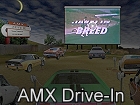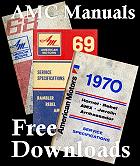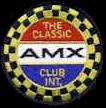Site Tools & Extras
Quick Links
1968-1972 Trans-Am Racing
Trans-Am Racing 1971
Roger Penske, Mark Donohue Car #6

Javelin Trans-Am Champion
For this year, Chrysler withdrew its financial backing and the Barracuda and Challenger vanished from the 1971 entry lists. Driver Jerry Titus was fatally injured last year, taking the oomph out of the Pontiac Firebird effort.
Penske, still backed by his American Motors contract, decided to gamble with only one driver, Donohue. He sold his old Javelins to the American Racing Associates who picked up the cast off Peter Revson as their number one pilot.
As the racing world knows, Ford also withdrew all auto racing support, but Bud Moore decided to go it alone on an independent basis with George Follmer and Peter Gregg as the driver.
He sold his last year's cars to the Michigan based Tony DeLorenzo and Jerry Thompson, and there have been many independent Camaro entries filling out the field, with another Michigan man attracting much attention, J. Marshall Robbins, who cut his teeth around his father's Indianapolis race cars.
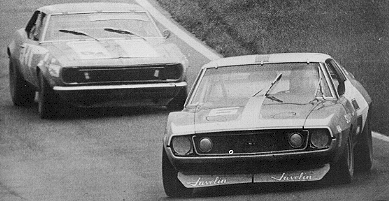
Of the eight Trans-Am races so far this 1971 season, Donohue has won six and Follmer two.
That is a little misleading, however. Although they are the chief combatants, there have been other drivers in the thick of the competition, Peter Revson in the ARA team Javelin, Peter Gregg in the second Bud Moore Mustang, Tony DeLorenzo and Jerry Thompson in the Troy, Mich. Mustangs, along with Michigan driver Warren Tope in another independent Mustang, and Warren Agor, Joe Chamberlain and Marshall Robbins in their independent Camaros.
After eight Trans-Am races, the point score shows Javelin 64, Mustang 52, Camaro 14 and Pontiac five, earned by Bob Tullius.
Scoring for the Trans-Am Championship is based on the system popular in Europe, with only the best nine races counting for the final total.
A second place finish by Donohue or Revson here at Michigan International will wrap up the title for Javelin.
Even if Mustang drivers won all three remaining races, Michigan, Kent, Wash. and Riverside, their point total will only be 69, and it's inconceivable on the past record that Donohue will stumble so badly in the final three races that he can't win at least six points.
Even though experienced horse race bettors will always warn you to beware of the "sure thing," we don't see how Javelin can miss the title at this point.
The fact that the championship appears to be out of their grasp does not dampen the competitive incentive for the Mustang and Camaro racers.
After all, they are operating without factory backing. They are independents, spending and earning their own dough, and you just can't find any greater incentive than Uncle Sam's green-backs.
They'll battle Donohue all the way to the checkered flag and the bank for the winner's share of today's $30,000 prize cash.
Donohue on preparation of the Trans-Am Sunoco Javelin
The following article is based on a recent question - and - answer session with Mark Donohue, driver of the Sunoco Javelin for Roger Penske Racing Enterprises. With four seasons of Trans-Am racing under his belt, more wins than any other Trans-Am driver, and plenty of experience in preparing the cars, he speaks with authority.
Question: Mark, how many hours does it take to prepare a Trans-Am car capable of winning in today's competition?
Mark Donohue: It is difficult to say exactly. There are over 1,000 man-hours that go into chasis work prior to bolting on the first part. This is in cutting, welding, reshaping, grinding, and finishing. Building the pieces and putting them on the car probably takes another 1,500 to 2,000 man-hours.
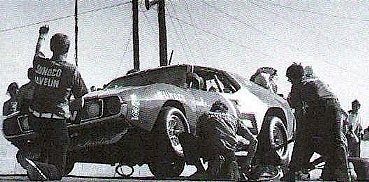
Q: It must be rather expensive.
M.D.: The cost of building one Trans-Am car has escalated quite a bit over the years due to rule changes. Things that were difficult to police have been made legal, and that has raised the cost of preparation. In 1967, when we started Trans-Am racing, the cost to build a Trans-Am car was about $20,000. In 1968 in 1969, we figure we spent roughly $30,000 to $35,000. Last year, to build just one Trans-Am Javelin cost us $62,000 - maybe more - but that at least was what we could account for directly.
Q: Did part of the expenditure go for the so-called Penske touch?
M.D.: We do try very hard to achieve a finished look with our cars. I think that it is a trademark of Penske racing. We're not in the show car business, but we do have a great deal of pride in our cars. So our 1971 Sunoco Javelin is almost a show car from the standpoint of detail and finishing. American Motors could take our Javelin to a car show tomorrow and it probably would win a concours award.
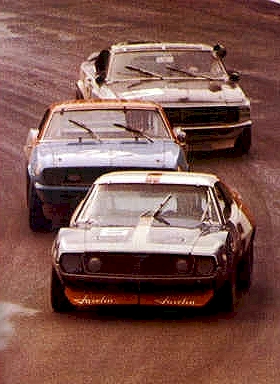
Q: What makes a winner in Trans-Am racing today?
M.D. : Well, the first thing is that in Trans-Am racing the rules are written so that it is very difficult to put together a really superior car. The engine builder, for example, has great difficulty gaining a horsepower advantage over others. I think this type of racing is a game of numbers. You have certain numbers that you have to comply with such as the car weight and size, the wheelbase and track, the gallonage of fuel, and the engine specifications. So it boils down to who is the cleverest in getting all these things working together for the fastest and most reliable car. It also helps to have good pit work during the race.
Q: How do you get that combination?
M.D.: In the last three or four years, we have been through a tremendous amount of experimenting. We have tried out many ideas that we thought would make a better, faster car. I would say 60 to 70 percent of them have been fruitless - it gave no additional performance. We have found somethings that do work, and we know a lot of things that we won't try again.
Q: Can you mention some of the things you did for this season?
M.D.: Last winter, we went to California for two months and ran many, many miles at the Ontario Motor Speedway in a development program. We tested some new tires for Goodyear and tried out new things on the car. Development work on the engine was going on simultaneously at Traco Engineering and when they came up with something, we put it into the car immediately and ran tests on the track. Out of this we developed a new exhaust system, a new dry sump system, a new breathing system, and got them all in the car at one time. When we were satisfied, we came back to Philadelphia and built the new car from scratch with the 1971 shell incorporating all the changes and improvements.
Q: After all that, what roll does the driver play in winning?
M.D.: A certain amount of skill and experience is necessary. But he also has to be prepared physically. A Trans-Am race is hard to drive from the standpoint of physical input. The cars are very strong, and you can push them further than you can more fragile racing machinery. And so it becomes a very grueling kind of race. You might say that the driver has to contribute good preparation too.
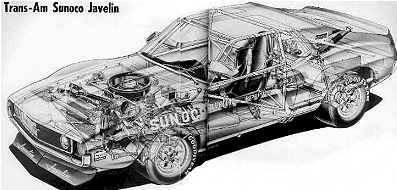
Mark Donohue won seven races in 1971, including six straight. Donohue easily won the Driver's Championship, and AMC was the winner among manufacturers.
Trans-Am Racing 1971 Roy Woods Racing ARA Javelin
Peter Revson #68, Tony Adamowicz #69
Thank you to Chris and Mark Sorensen for use of these pictures and information. All pictures by Mark Sorensen.
Misc pictures of the Roy Woods car. My father (Mark Sorensen) is the skinny guy in front with the white pants, pushing the car off the trailer. The picture was taken in Bloomington, MN. I also included a picture of his 1970 Javelin along side the Roy Woods car. (My father still owns his 1970 Javelin with 28K original miles on it!) Also included are a few color pictures of the car in action.
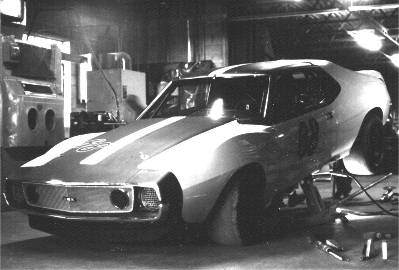
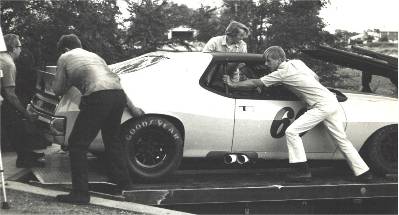
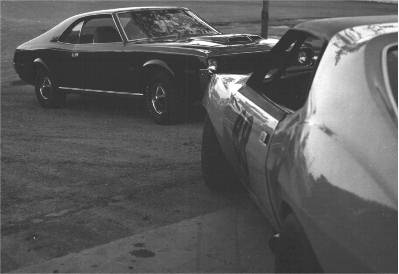
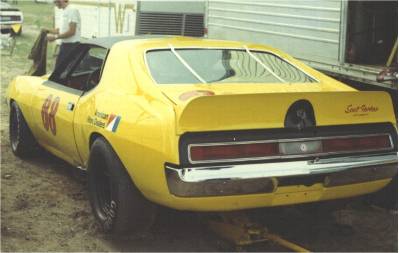
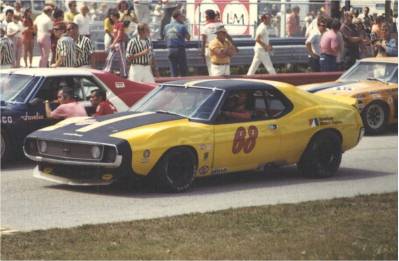
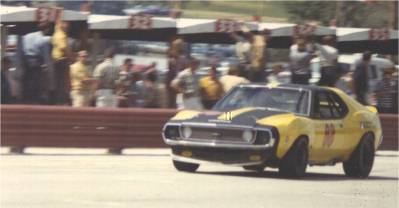
These pics are of the roll cage in the rear, showing how it was welded to the factory bumper brackets. Also included is a picture of the cockpit.
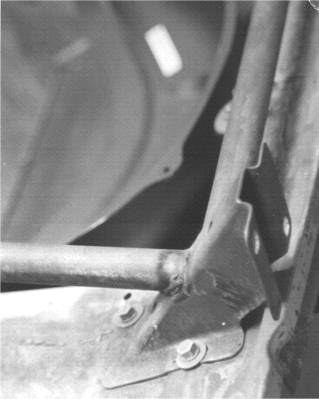
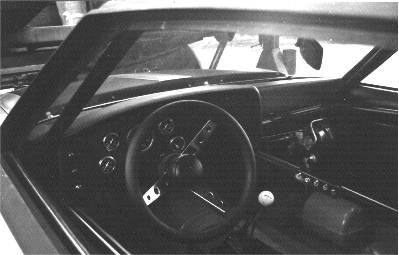
Roy Woods' 1971 Javelin suspension setup. One of the pictures -shows two boxed lower control arms. The upper one is off a Penske/Donohue Javelin. The other was made by Roy Woods. You can see that the quality of the Roy Woods control arms are much better.
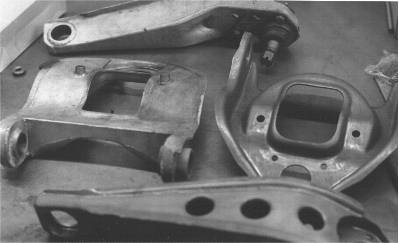
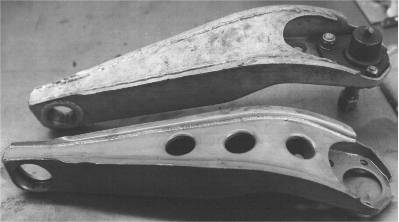
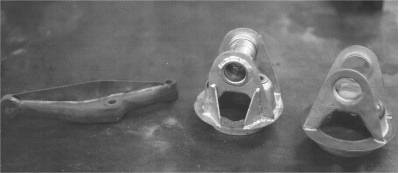
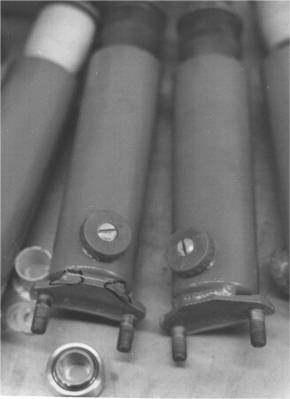
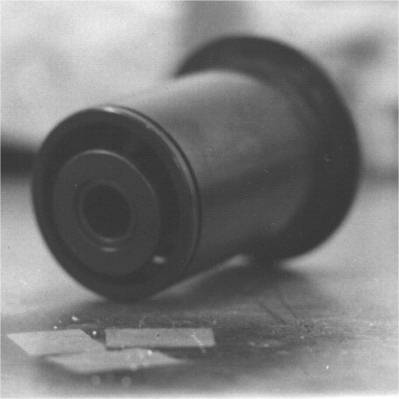
Here are some pictures of the brake setup on Roy Woods' 1971 Javelin.
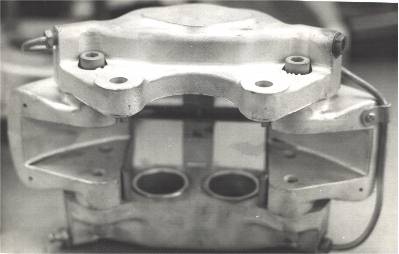
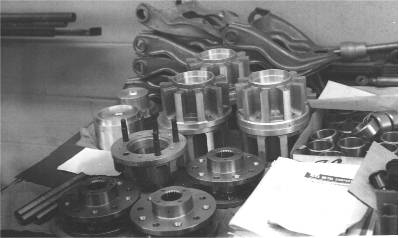
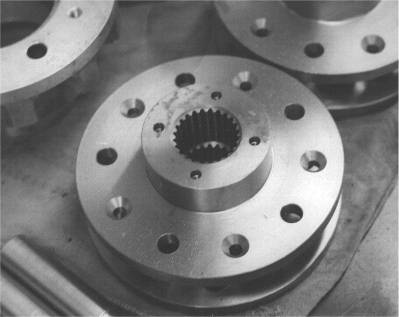
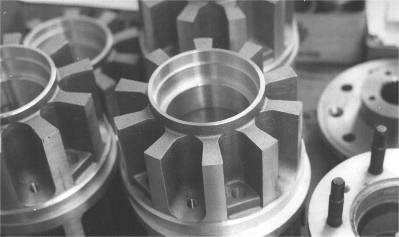
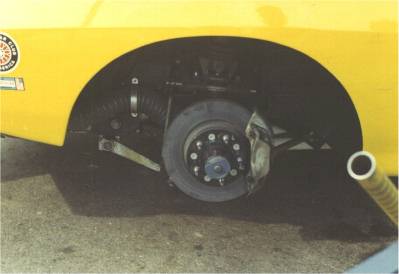
Thank you to Chris and Mark Sorensen for use of these pictures.

